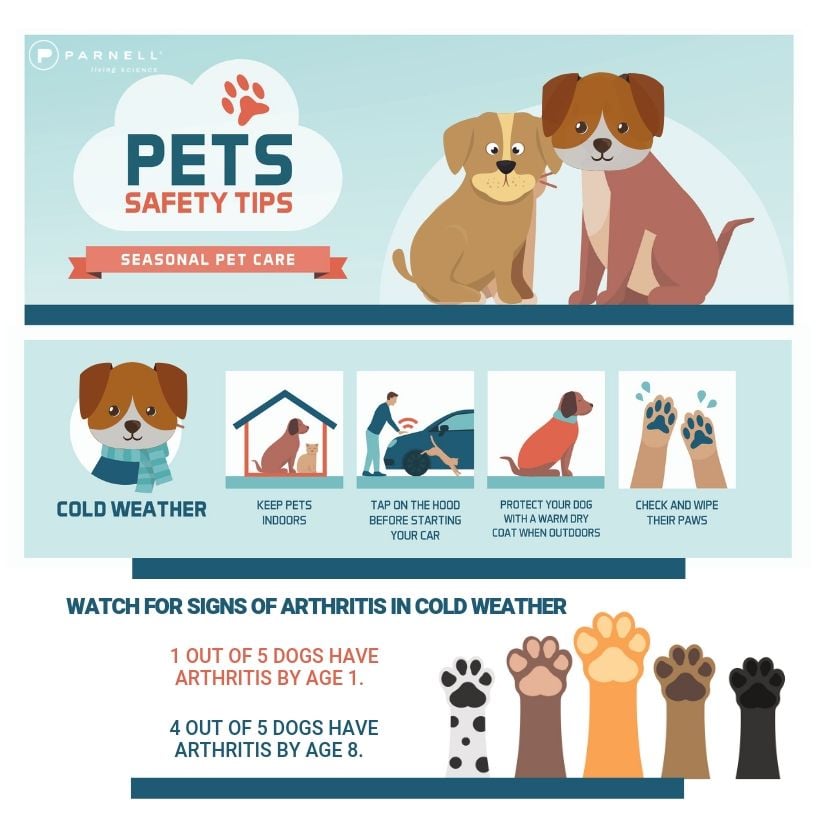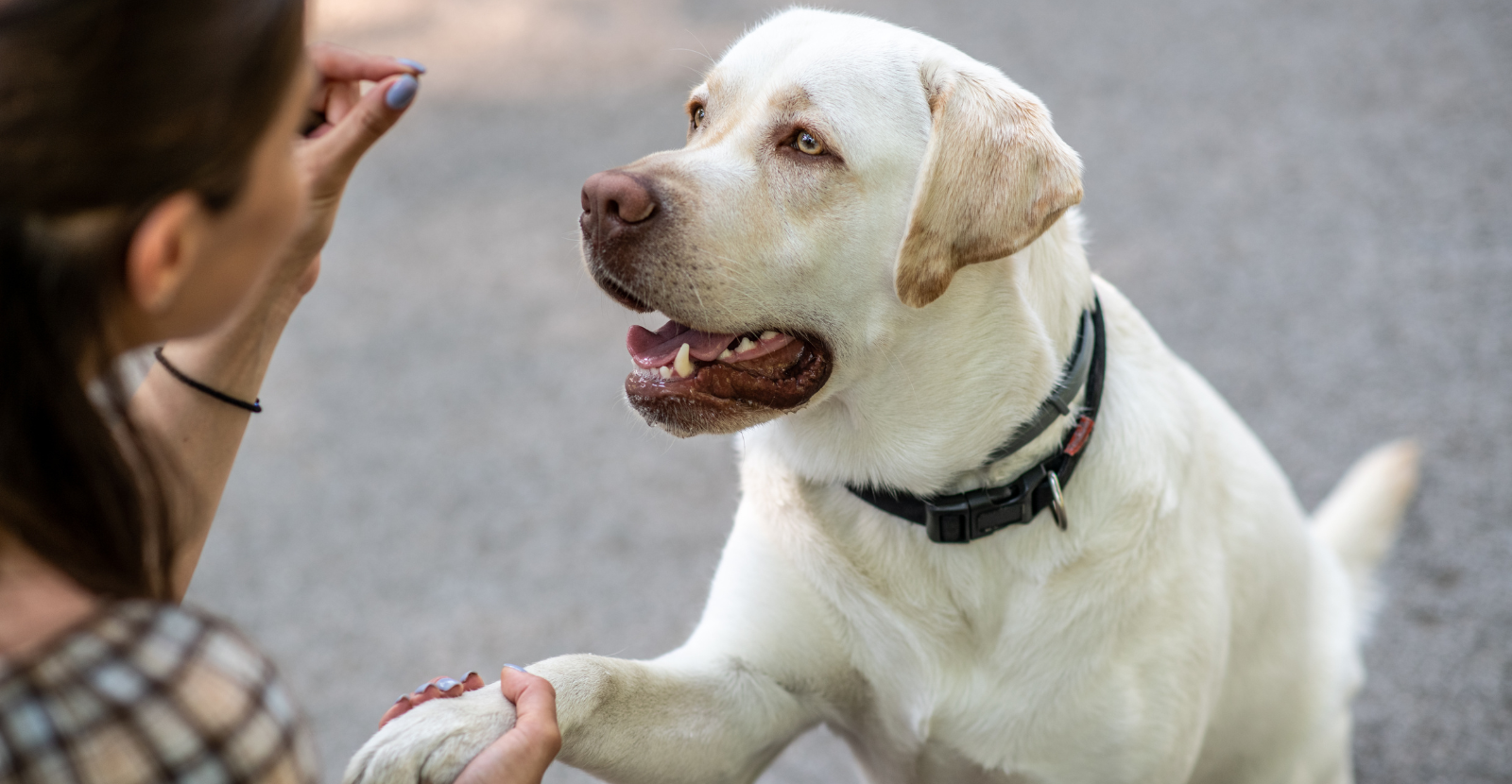
Find yourself wearing a sweater and covered in a blanket? This is because when it’s cold outside, we change our habits to acclimate to the weather. We wear warmer coats and sweaters. How can we help our pets prepare for cooler temperatures? Here’s a helpful infographic to keep in mind.

Now, read on for further detail:
Keep dogs close
When your dog goes outside temporarily for walks or to do their business, be sure you have them on a leash or enclosed back yard. Unfortunately, pets are lost more in winter than any other time of year. This is also a good reminder to be sure your pet’s collar has current contact information or they are microchipped. If someone else finds them, these resources are extremely important.
Tap on the Hood Before Starting Your Car
Cats can be more resourceful in the cooler temperatures than dogs. Outdoor cats may not even want to be indoors. However, when it gets cold, cats crave warmth and may crawl underneath cars to keep warm. If you start your car, and a cat is sleeping in the wheel well or under the hood, they may get injured or killed by moving engine parts. To prevent this, make a noise by tapping on the hood of your car or a honk of the horn to scare away any overnight guests who may have used the warmth of your car as a refuge from colder temperatures.
Protect Your Dog with a Warm Coat when Outdoors
You know your dog, so dress them appropriately when heading outside in the cooler temperatures. If you have a dog with shorter hair, such as a Boston terrier or Chihuahua, put a sweater or coat on them to keep them warm when they are outside.
Check and Moisturize their Paws
Just as the cold weather chaffs human skin, this can also happen to your dog’s paws. There are now a variety of products you can use to moisturize the pads of their paws, from a dog-specific balm to a non-scented lotion or petroleum jelly.
Watch for Signs of Arthritis
According to Petmd.com, arthritis is fast becoming one of the most common health problems seen by veterinarians. Just as in humans, cold weather can make joints ache more, thus the signs of arthritis becomes more apparent.
Unfortunately, 4 out of 5 dogs by age 8 will have signs. An even more surprising statistic is 1 out of 5 dogs will have signs of arthritis by the time they are one year old!
Some common signs of arthritis to look for include:
- Hesitation or visible discomfort when getting up from sleeping
- Hesitation or visible discomfort when jumping into a car, going up stairs or getting out of bed
- Lack of willingness to play as often as they once did
- Less activity, more sleeping
Parnell Living Science are the experts on arthritis in dogs, and the makers of Glyde® Mobility Chews. Glyde uses all-natural ingredients to combat the signs of aging and promote healthy joints that let your dog do everything he or she loves to do! Glyde is the only APVMA registered nutraceutical that contains proven level of three key components that work to relieve the painful signs of arthritis.
- New Zealand Green Lipped Mussel (GLM): A powerful anti-inflammatory
- Glucosamine: Reduces cartilage degradation
- Chondroitin Sulfate: Helps rebuild cartilage
As humans and dogs age, arthritis becomes more likely. For dogs, there are certain breeds with a higher propensity for osteoarthritis in dogs. There are many risk factors associated including breed, size and weight of dogs. Find out the risk of your pets by clicking a link below:
You will see the initial assessment based on your answers and receive an email with the results.
No matter what you do, stay safe in the cooler temperatures!














